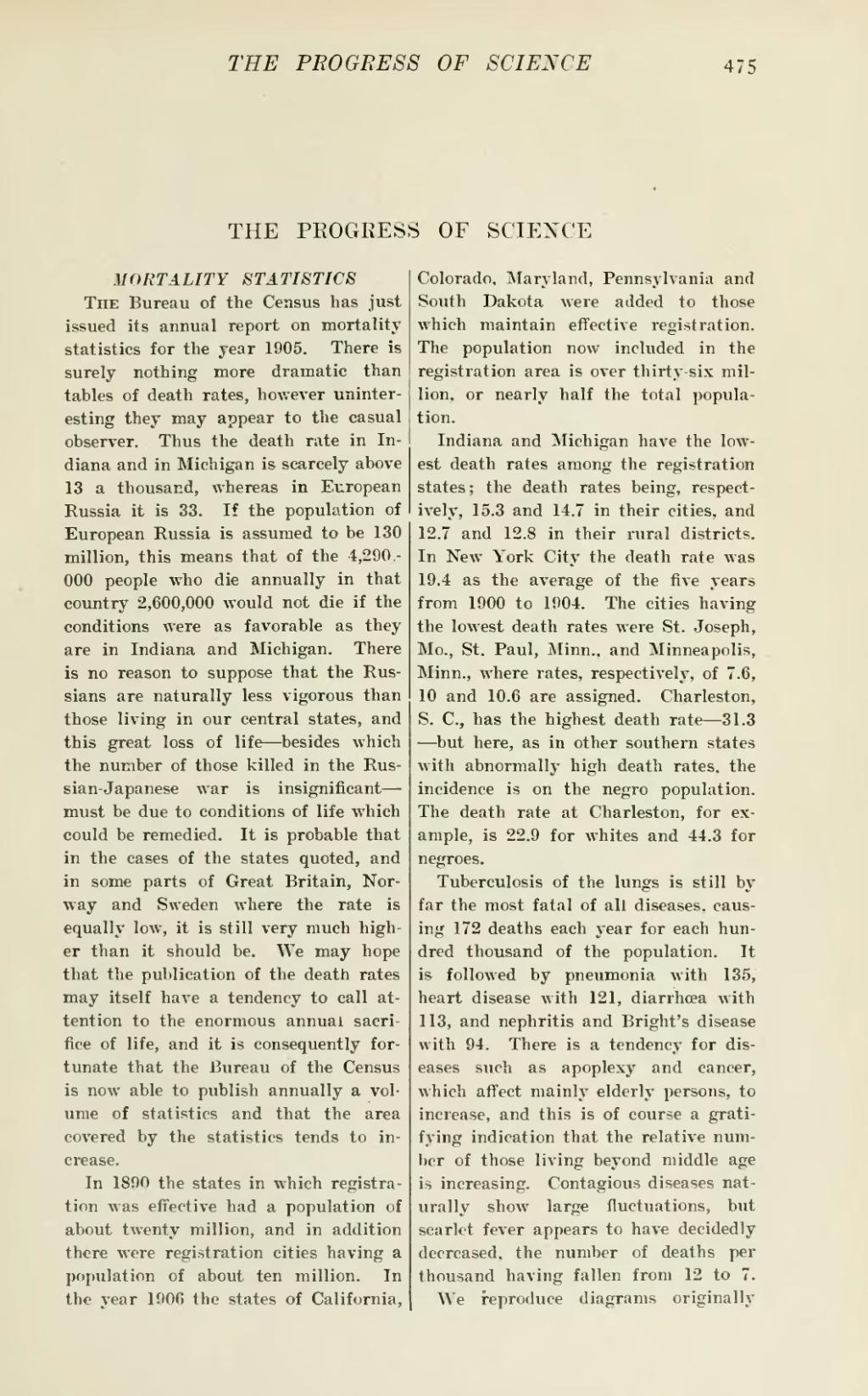MORTALITY STATISTICS
The Bureau of the Census has just issued its annual report on mortality statistics for the year 1905. There is surely nothing more dramatic than tables of death rates, however uninteresting they may appear to the casual observer. Thus the death rate in Indiana and in Michigan is scarcely above 13 a thousand, whereas in European Russia it is 33. If the population of European Russia is assumed to be 130 million, this means that of the 4,290,000 people who die annually in that country 2,600,000 would not die if the conditions were as favorable as they are in Indiana and Michigan. There is no reason to suppose that the Russians are naturally less vigorous than those living in our central states, and this great loss of life—besides which the number of those killed in the Russian-Japanese war is insignificant—must be due to conditions of life which could be remedied. It is probable that in the cases of the states quoted, and in some parts of Great Britain, Norway and Sweden where the rate is equally low, it is still very much higher than it should be. We may hope that the publication of the death rates may itself have a tendency to call attention to the enormous annual sacrifice of life, and it is consequently fortunate that the Bureau of the Census is now able to publish annually a volume of statistics and that the area covered by the statistics tends to increase.
In 1890 the states in which registration was effective had a population of about twenty million, and in addition there were registration cities having a population of about ten million. In the year 1900 the states of California, Colorado, Maryland, Pennsylvania and South Dakota were added to those which maintain effective registration. The population now included in the registration area is over thirty-six million, or nearly half the total population.
Indiana and Michigan have the lowest death rates among the registration states; the death rates being, respectively, 15.3 and 14.7 in their cities, and 12.7 and 12.8 in their rural districts. In New York City the death rate was 19.4 as the average of the five years from 1900 to 1904. The cities having the lowest death rates were St. Joseph, Mo., St. Paul, Minn., and Minneapolis, Minn., where rates, respectively, of 7.6, 10 and 10.6 are assigned. Charleston, S. C, has the highest death rate—31.3—but here, as in other southern states with abnormally high death rates, the incidence is on the negro population. The death rate at Charleston, for example, is 22.9 for whites and 44.3 for negroes.
Tuberculosis of the lungs is still by far the most fatal of all diseases, causing 172 deaths each year for each hundred thousand of the population. It is followed by pneumonia with 135, heart disease with 121, diarrhoea with 113, and nephritis and Bright's disease with 94. There is a tendency for diseases such as apoplexy and cancer, which affect mainly elderly persons, to increase, and this is of course a gratifying indication that the relative number of those living beyond middle age is increasing. Contagious diseases naturally show large fluctuations, but scarlet fever appears to have decidedly decreased, the number of deaths per thousand having fallen from 12 to 7.
We reproduce diagrams originally
